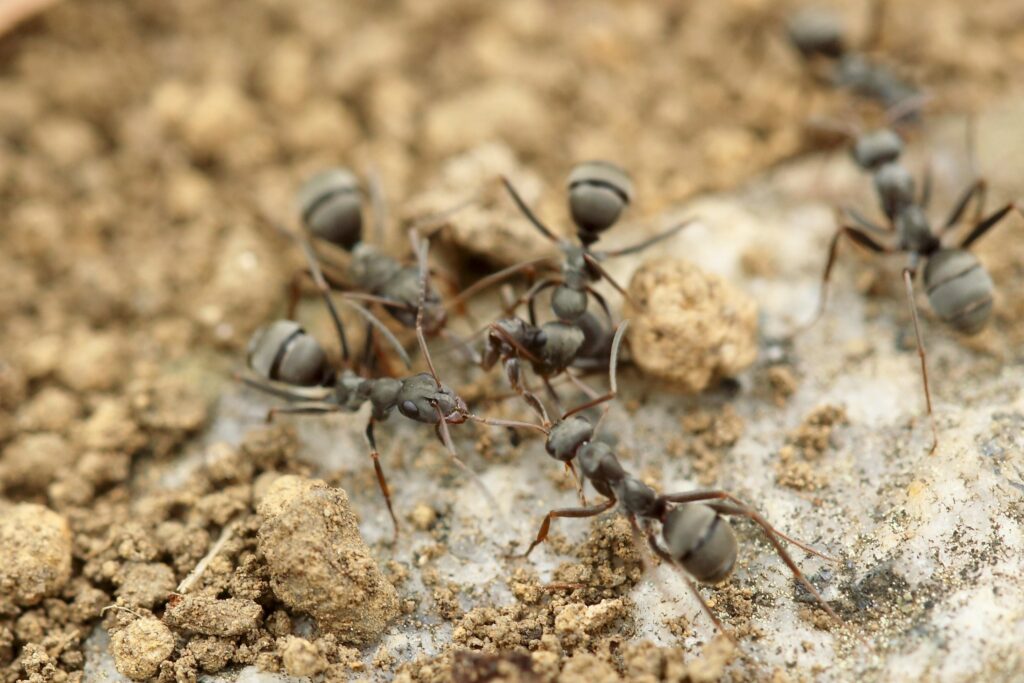Two of Earth’s most successful species—humans and ants—have independently evolved to become master architects and city builders. While humans construct gleaming metropolises of concrete and steel, ants build elaborate underground networks that house millions of inhabitants in perfect harmony. Though separated by scale and materials, these urban developments share surprising similarities in their complexity, organization, and functionality. This fascinating parallel invites us to compare these two distinct approaches to city building and ask: who ultimately constructs the better urban environment? As we explore the engineering marvels of both species, we’ll discover that each has developed unique solutions to universal challenges of communal living, resource management, and environmental adaptation.
The Architects of Different Scales
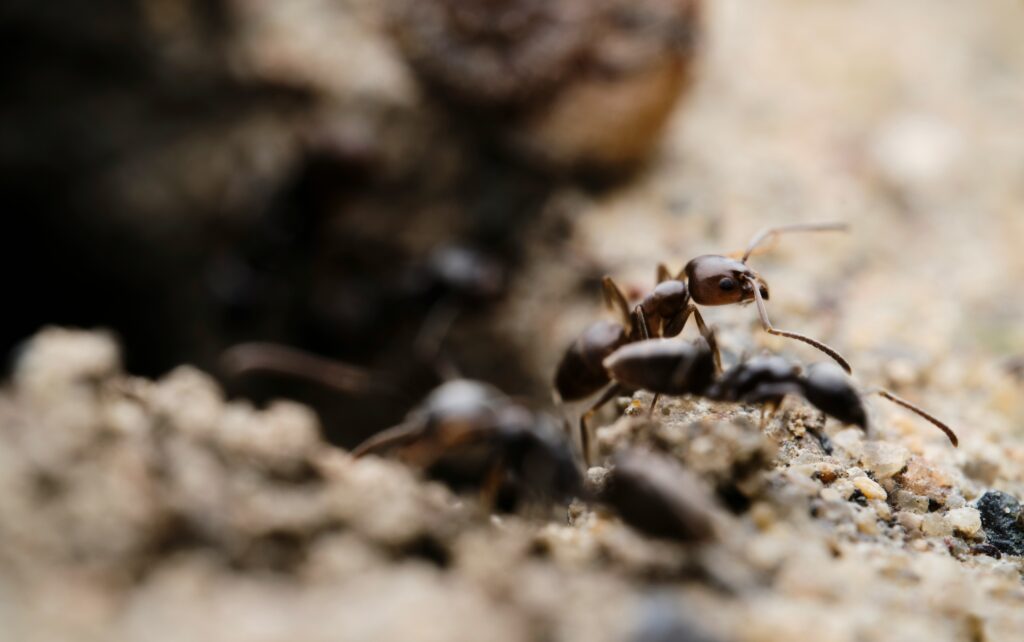
Humans and ants operate on dramatically different scales, yet both species have mastered the art of architectural design. Human cities reach skyward with structures sometimes exceeding 800 meters in height, visible from miles away and housing thousands of individuals within single buildings. In contrast, ant colonies extend primarily below ground, with some species creating networks that can reach depths of 8 meters and span hundreds of square meters horizontally. The leafcutter ant species can construct colonies housing up to 8 million individuals—comparable to the population of New York City—all within a space that would fit beneath a typical city block. Despite these differences in scale, both species demonstrate remarkable engineering capabilities, creating structures that efficiently serve their population’s needs while adapting to local environmental conditions.
Engineering and Materials Science
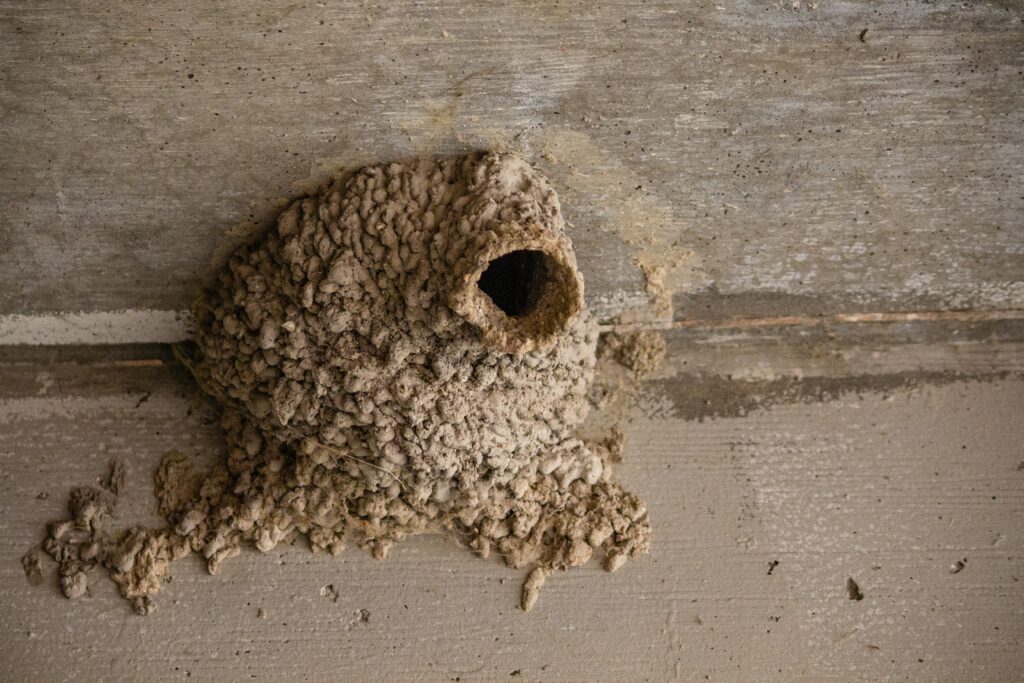
Human cities represent the pinnacle of our technological advancement, utilizing sophisticated materials like reinforced concrete, structural steel, and advanced composites engineered for specific performance characteristics. We employ complex mathematics, computer modeling, and centuries of accumulated engineering knowledge to construct our urban environments. Ants, meanwhile, work with natural materials like soil, sand, clay, and plant matter, yet achieve remarkable structural integrity through precise manipulation of these simple elements. Some species mix soil with their own saliva to create a cement-like substance that hardens into protective walls and chambers. The Weaver ant species even practice a form of living engineering, using their larvae’s silk to stitch together leaf walls for their arboreal nests. Despite lacking formal education or blueprints, ants’ collective intelligence and evolutionary adaptations produce structures optimized for strength, ventilation, and temperature regulation.
Population Density and Housing Solutions

When it comes to population density management, ants significantly outperform humans. The average ant colony packs thousands of individuals into a relatively tiny space, yet maintains perfect order without the social problems that often plague densely populated human cities. In human urban centers, housing crises, homelessness, and inadequate living conditions remain persistent challenges despite our technological capabilities. Ants, by contrast, efficiently organize their living spaces with specialized chambers for different functions: nurseries for larvae, royal chambers for queens, food storage areas, and even agricultural chambers for fungus-growing species. Their housing “policy” ensures every colony member has appropriate shelter with no individuals left without accommodation. This remarkable efficiency stems from their evolutionary programming toward collective survival rather than individual comfort or status, demonstrating how different biological imperatives lead to different urban development patterns.
Transportation Networks and Mobility

Transportation infrastructure forms the circulatory system of any city, and both species have developed sophisticated networks for moving individuals and resources. Human cities feature complex layered systems including roads, highways, subway systems, and airports that facilitate movement across multiple scales. Despite this complexity, human transportation networks frequently suffer from congestion, accidents, and inefficiency. Ant colonies, meanwhile, construct elaborate highway systems of trails and tunnels that efficiently direct traffic between nest chambers and food sources. These pathways can extend for hundreds of meters from the main colony and include multiple routes to critical resources. Remarkably, ants have evolved traffic management systems that prevent congestion even during peak activity periods, using pheromone signals and simple behavioral rules that result in efficient collective movement without centralized control. This decentralized yet highly functional approach to traffic management represents one area where ants may actually outperform human engineering solutions.
Waste Management and Sanitation

Effective waste management is critical for maintaining healthy urban environments, and here the contrast between species is particularly stark. Human cities generate enormous quantities of waste—the average metropolis produces thousands of tons daily—requiring complex collection systems, landfills, and increasingly, recycling and composting facilities. Despite these efforts, waste management remains a significant challenge for human settlements, with environmental contamination and inadequate disposal plaguing many urban areas worldwide. Ant colonies, by comparison, implement remarkably effective sanitation systems with dedicated waste management specialists. Most species maintain specific chambers designated as refuse areas located far from living quarters and food storage. Some colonies even establish external waste dumps at calculated distances from the nest entrance, effectively creating municipal landfills. Dead colony members are quickly removed to prevent disease spread, demonstrating an instinctive understanding of public health principles that human cities have sometimes struggled to implement effectively.
Energy Management and Sustainability
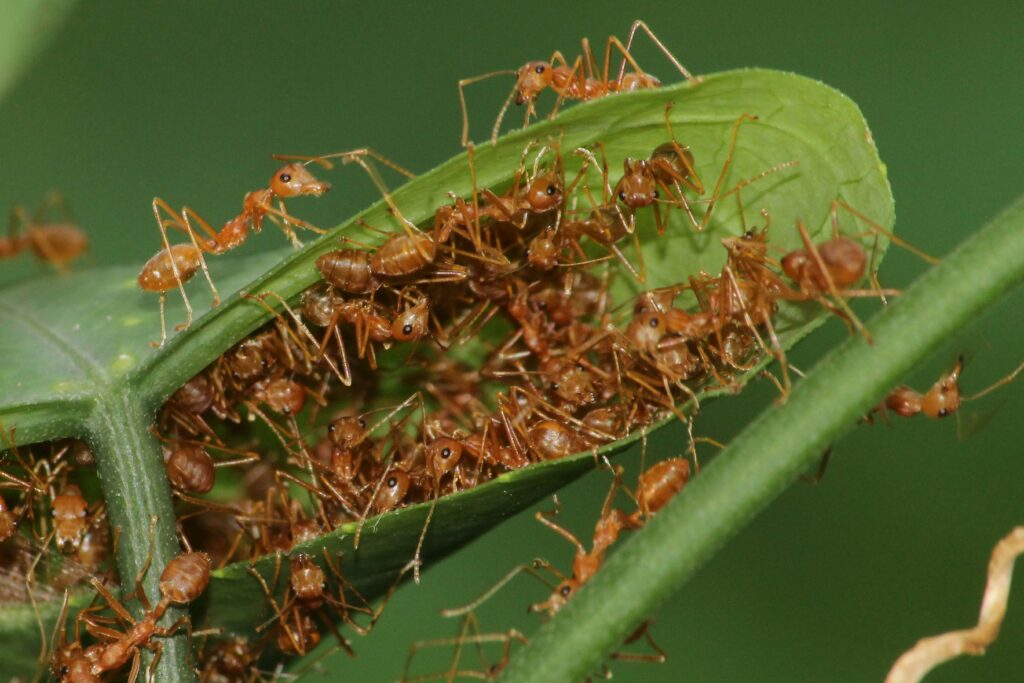
The energy requirements of human cities represent one of our greatest sustainability challenges, with urban centers consuming vast quantities of electricity, fossil fuels, and other resources to power buildings, transportation, and infrastructure. Despite increasing adoption of renewable energy sources, most human settlements remain heavily dependent on environmentally damaging energy systems with significant carbon footprints. Ant colonies, by contrast, operate as models of energy efficiency, functioning entirely on renewable biological energy harvested from their environment. Their structures are passively heated and cooled through clever architectural design, with some desert species constructing ventilation chimneys that create convection currents to regulate internal temperatures. Fungus-growing ant species even practice a form of agriculture that maintains stable food sources within their colonies, operating sustainable food systems that have functioned successfully for millions of years. In terms of sustainable design and ecological integration, ant cities demonstrate principles that human urban planners increasingly strive to incorporate.
Defense and Security Systems

Both humans and ants have developed sophisticated approaches to security, though with dramatically different methods. Human cities employ technological surveillance systems, professional security forces, and architectural designs intended to regulate access and protect inhabitants. Despite these measures, crime and security breaches remain persistent challenges in most urban environments. Ant colonies feature remarkably effective security systems based on chemical recognition and specialized soldier castes. Colony entrances are carefully guarded by specialized ants with enlarged mandibles or chemical defense capabilities who instantly identify non-colony members through pheromone detection. Some species construct elaborate defensive structures including narrow entrances that can be quickly blocked during attacks or even moats around nest entrances to prevent infiltration by predators. The chemical recognition system employed by ants virtually eliminates unauthorized entry, achieving a level of security that human cities, despite technological advantages, have yet to match.
Social Organization and Governance

The governance systems of human and ant cities reveal profound differences in social organization. Human urban centers require complex administrative structures including elected officials, civil servants, and regulatory bodies to maintain order and provide services. These systems vary widely in effectiveness and frequently struggle with corruption, inequality, and inefficiency. Ant colonies operate through decentralized collective decision-making that nevertheless achieves remarkable coordination. While queens produce eggs, they don’t issue commands in the conventional sense; instead, colony activities are coordinated through chemical communication and simple behavioral rules followed by all members. This distributed intelligence allows colonies to respond rapidly to threats, discover and exploit new resources, and repair damage without requiring centralized command. The absence of social inequality and conflict within ant colonies stands in stark contrast to human cities, where socioeconomic disparities often create divided urban landscapes with vastly different living conditions for different population segments.
Environmental Adaptation and Resilience

Both species demonstrate remarkable abilities to adapt their urban environments to diverse conditions, but with different approaches to environmental challenges. Human cities increasingly face threats from climate change, requiring expensive retrofitting and infrastructure upgrades to withstand extreme weather events and changing conditions. Ant colonies exhibit impressive environmental responsiveness, with some species constructing mounds oriented to maximize sun exposure in colder climates or building deeper into the soil in hot regions to maintain optimal temperatures. During floods, certain ant species create living rafts from their own bodies to preserve colony members until waters recede. Army ants construct temporary bivouacs from their interlinked bodies, creating living architecture that can be rapidly assembled and disassembled as the colony moves. This adaptability and resilience to environmental changes represents millions of years of evolutionary refinement, resulting in urban designs that respond intuitively to environmental conditions without requiring conscious redesign.
Construction Speed and Efficiency

The pace of urban development differs dramatically between the two species, with ants demonstrating remarkable construction efficiency. Human cities grow incrementally, with major projects often taking years or decades to complete amid budget overruns, labor challenges, and regulatory requirements. The average skyscraper requires 3-5 years to construct, while major infrastructure projects like subway systems can span decades from planning to completion. Ant colonies, by contrast, can establish functional structures in days or weeks, with thousands of individuals working simultaneously without central coordination. When colonies relocate or expand, workers immediately begin excavating new chambers and tunnels using a distributed workflow that maximizes efficiency. Fire ants can construct water-resistant rafts from their own bodies in minutes when facing floods, creating functional living structures capable of housing the entire colony during emergencies. This construction speed provides significant advantages in responding to threats or exploiting new opportunities, demonstrating how collective action without bureaucratic obstacles enables rapid urban development.
Resource Management and Food Systems
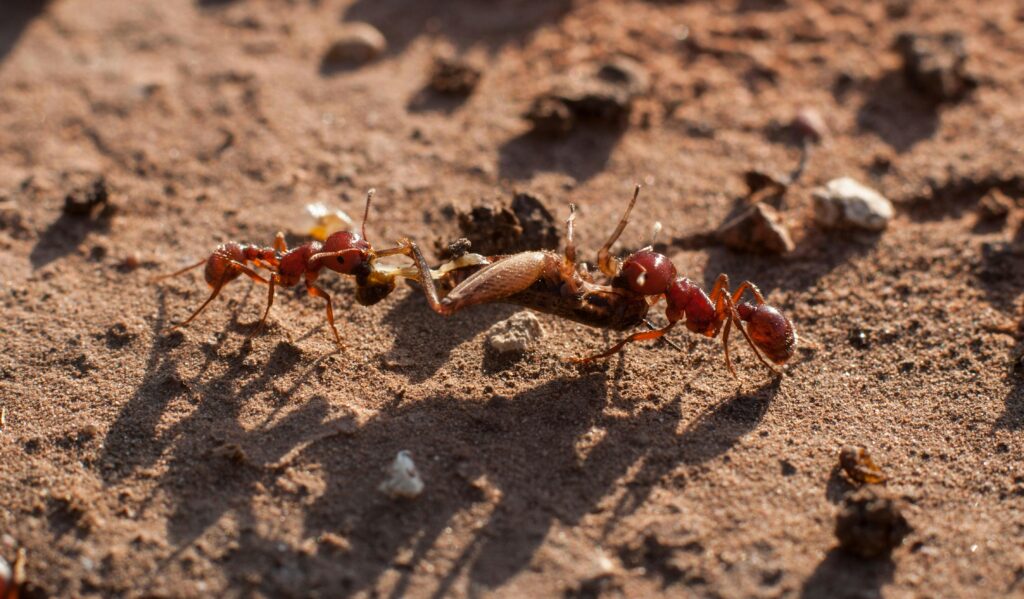
Urban food systems represent a critical infrastructure element, and here both species have developed sophisticated approaches with distinct strengths. Human cities rely on complex global supply chains that import food from distant agricultural regions, requiring extensive transportation networks, storage facilities, and distribution systems. These systems provide remarkable diversity but often at high environmental costs and with significant vulnerability to disruption. Ant colonies operate highly efficient local food procurement systems, with specialized foragers identifying resources and quickly mobilizing workers to harvest and transport items back to the colony. Leafcutter ants practice sophisticated agriculture, cultivating fungus gardens on harvested plant material in climate-controlled chambers within their nests. Harvester ants collect and store seeds in specialized granaries with precise humidity control to prevent germination while preserving nutritional value. These efficient, localized food systems operate with minimal waste and maximum nutritional efficiency, demonstrating sustainable urban food management principles that human cities increasingly seek to incorporate through urban agriculture and local food initiatives.
Longevity and Urban Sustainability

The temporal dimensions of city building reveal perhaps the most significant contrast between the two species’ approaches to urban development. Human cities typically reflect short-term planning horizons, with infrastructure often designed for 50-100 year lifespans and frequently requiring expensive maintenance and replacement. Political and economic cycles often prioritize immediate benefits over long-term sustainability, resulting in urban developments that can become obsolete or inadequate within decades. Some ant colonies, by comparison, can persist for extraordinary time periods, with certain species maintaining continuous occupation of the same site for over 30 years—dozens of ant generations. The architecture itself evolves over time as chambers are expanded, connections redesigned, and new features added to accommodate changing colony needs. This evolutionary approach to urban development creates remarkably sustainable structures that remain functional and appropriate across multiple generations. The longest-lived human cities have required constant rebuilding and redesign, while ant colonies achieve transgenerational sustainability through incremental adaptation and biologically optimized design principles.
Learning from Each Other: Biomimicry in Urban Design

The comparison between human and ant cities isn’t merely academic—it increasingly influences contemporary urban planning through biomimicry, the practice of emulating nature’s time-tested patterns and strategies. Architects and urban designers now study ant colony ventilation systems to develop more energy-efficient buildings that use passive cooling principles rather than mechanical systems. Traffic engineers examine ant movement patterns to develop more efficient transportation algorithms and self-organizing vehicle systems. Decentralized waste management, distributed decision-making processes, and efficient resource allocation systems observed in ant colonies provide models for smarter, more sustainable human cities. As climate change and resource constraints challenge conventional urban development approaches, the 50+ million years of evolutionary refinement represented by ant architecture offers valuable lessons. By studying how these tiny engineers solve universal urban challenges, human designers gain insights that could help transform our cities into more sustainable, efficient, and resilient environments better equipped to face an uncertain future.
The Verdict: Different Solutions to Universal Challenges

So who builds the better city? The answer depends entirely on how we define success. Ant colonies demonstrate superior efficiency, sustainability, and social harmony, operating within ecological boundaries while providing for all colony members’ needs. Their architecture achieves remarkable functionality using minimal resources and adapts organically to changing conditions without centralized planning. Human cities, meanwhile, reflect our species’ extraordinary creativity, technological innovation, and cultural expression. They enable scientific advancement, artistic creation, and complex social interactions that generate new ideas and possibilities beyond biological imperatives. Perhaps the most meaningful conclusion isn’t declaring a winner but recognizing that both species have developed sophisticated solutions to the universal challenges of communal living. The most profound insight may be that despite our technological sophistication, humans can still learn valuable lessons from these tiny architects who have been perfecting sustainable urban development for millions of years before we built our first cities.

